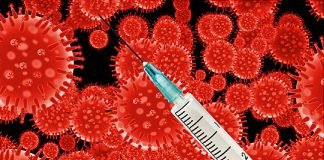
Dimitris Ilias
Technology has thankfully solved a lot of problems during this difficult period especially given the nature of the virus. Ancient Greeks would say Ουδέν κακόν αμιγές καλού which translates roughly to Every cloud has a silver lining! The opposite can be true about technology. Misinformation during the pandemic is rampant and a lot of people are confused about quarantines, transmission, duration of isolation etc. Thankfully our paper has a collaboration with Dr. Christos Karatzios Assistant Professor of Paediatrics/Infectious Diseases at the Montréal Children’s Hospital. Dr. Karatzios has a strong online presence and is always willing to dispel myths and inform for the good of all.
According to Dr. Karatzios, either people are being misinformed by Public Health authorities when they call/text you to tell you that you are a COVID-19 case or you are a contact of one or public health authorities are giving out the right information but people are not understanding it.
Incubation and transmission
SARS-2-CoV has a 14 day incubation period from infection to infectivity/disease. Most people start shedding virus/get symptoms about 5-8 days after infection.
COVID-19 (the disease caused by SARS-2-CoV) can last for weeks but transmission of the virus happens for:
10 days after symptoms begin for most people out there.
10 – 21 days for someone who needs ICU care due to bad COVID-19.
28 days for immune suppressed people (chemotherapy or transplant patients, people with immunity problems, people on immunosuppressive medications/injections, people with advanced AIDS) because they can’t clear the virus within 10 days.
What should you do?
Dr. Karatzios would pose this question: you came into contact with an infected and infectious person? Your incubation and thus your quarantine is for 14 days AFTER your last KNOWN contact with the person…or from the time you get called by Public Health. If you have symptoms then you immediately start after your test. If you become infected then your quarantine is for 10 days only unless you are immune suppressed – then it is 28 days. For now, this recommendation has not changed – ever.
If you live with others (partner and let’s say 2 children) and you then get infected: then THEIR quarantine is YOUR 10 days PLUS THEIR 14 days. Stay away from others in your family bubble (basement or room with food delivered to you at your door and the use of own towels and own bathroom when feasible – close toilet lid and clean toilet surfaces with a bleach spray if there is a single bathroom). If you are a single caregiver though this is impossible. So, the rule is 10 + 14 = minimum 24 days of family quarantine unless you are immune suppressed then it’s 28 + 14.
That is: X + 14 days after the LAST possible infectious day of a close household member!
If suddenly one of the two kids in your house gets infected from you on day 7 and gets sick and tests positive for SARS-CoV-2, then EVERYONE ELSE in your house RESTARTS 10 + 14 days ALL OVER. And the formula repeats itself with each new case at home.
If someone has to go to hospital because of COVID-19 (or unfortunately passes away), then all others start 14 days after the last time they were in contact with the sick person (the day that person left for the hospital or passed away if at home)
Obviously if someone who is immune suppressed gets ill but stays home because of mild illness then quarantine for others at home is 28 + 14 days.
What happens when we don’t test well people at home around a sick person? How do we know they didn’t get infected and are asymptomatic? A very good question to which the doctor answers that his suggestion is to retest family members or people in your bubble after the tenth day of their quarantine with you to see if they are carriers.
The right information is the only way we can stop the spread in the community!
Take a look at the
featured Local Savings
at the bottom of this page!















